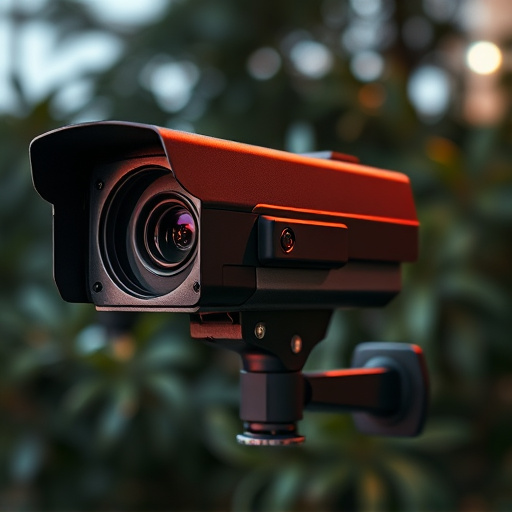Secure dummy cameras with robust mounting brackets and locks to prevent theft and vandalism. Use durable materials like stainless steel and aluminum for housing, along with camo finishes to disguise them. Strategically install cameras in visible areas and regularly maintain them for optimal performance as security deterrents.
Enhance your security system with a unique approach: secure dummy cameras. These static counterparts play a vital role in deterring real theft, acting as decoys without the costly electronics. Understanding their purpose and implementing robust protection is key. This guide explores how to effectively utilize dummy cameras, focusing on design features, material choices, installation, and maintenance to safeguard them from theft. Learn how to make your security setup both effective and deceptive.
- Understand Dummy Cameras' Role in Security
- Identify Common Targets for Camera Theft
- Design Features for Enhanced Protection
- Material Choices for Durability and Disguise
- Install and Maintain for Optimal Effectiveness
Understand Dummy Cameras' Role in Security
Dummy cameras play a crucial role in security systems, acting as a powerful deterrent against potential thieves and vandals. Their design mimics real security equipment, tricking intruders into believing that your property is under constant surveillance. By strategically placing these decoys, you create a false sense of security, which can significantly reduce the risk of theft or damage.
When it comes to ensuring the security of dummy cameras themselves, preventing theft is essential. Simple measures like securing them with robust mounting brackets and locks can make them more difficult to remove. Additionally, regular maintenance and checking for any signs of tampering can help keep these camera housings intact, reinforcing the overall security of your surveillance system.
Identify Common Targets for Camera Theft
Camera theft is a growing concern, especially in public spaces and businesses where high-quality security cameras are valuable assets. Criminals often target outdoor security cameras for their parts, which can be sold separately on the black market. Dummy cameras, while seemingly harmless, can also fall victim to theft if they’re not properly secured. These fake cameras, designed to mimic real ones, are a common target because they provide a quick and easy way to gain access to desirable components like lenses and circuit boards.
To safeguard your security system and prevent camera theft, it’s crucial to invest in secure housing for dummy cameras. This involves using robust materials that deter physical tampering and ensuring proper installation. By securing dummy cameras against theft, you’re not only protecting the integrity of your security setup but also maintaining a sense of safety and surveillance in your environment.
Design Features for Enhanced Protection
When it comes to protecting your property, design features in security camera housing play a crucial role. One innovative approach is the use of “secure dummy cameras against theft.” These devices look like real cameras but lack electronics, making them resistant to theft and vandalism. The physical structure acts as a deterrent by providing a sturdy, unappealing target that cannot be easily removed or tampered with.
This design strategy offers several advantages. First, it reduces the financial loss associated with stolen security systems. Second, it discourages destructive behavior since the dummy cameras are not valuable and do not contain any electronics to destroy. By combining robust materials and a realistic appearance, these secure dummy cameras provide an effective layer of protection for your property without relying on complex electronics.
Material Choices for Durability and Disguise
When choosing materials for a security camera housing without electronics, durability is paramount. The outer shell should be crafted from robust and long-lasting materials that can withstand harsh weather conditions, physical damage, and even attempts at theft. High-quality metals like stainless steel and aluminum offer excellent corrosion resistance and strength, making them ideal options for outdoor deployments. Additionally, these materials’ natural reflective properties can serve as a visual deterrent, confusing would-be thieves who might expect a camera to be easily identifiable.
For a more subtle approach, considering camo-patterned or textured finishes can help securely disguise dummy cameras, making them less conspicuous and thus harder for criminals to target. These aesthetic choices not only enhance the camera’s camouflage but also contribute to its overall durability by reducing the risk of damage from environmental factors and intentional vandalism. In essence, material selection plays a dual role in safeguarding both your property and your investment in secure dummy cameras against theft.
Install and Maintain for Optimal Effectiveness
To maximize the effectiveness of security camera housing without electronics, proper installation and maintenance are crucial. Place them in strategic locations where they offer a clear view of key areas, such as entrances, exits, and valuable assets. Secure dummy cameras against theft by mounting them firmly to walls or ceilings using reinforced hardware, ensuring they cannot be easily dislodged. Regularly inspect the housing for any signs of damage or wear and tear, cleaning the lenses and replacing batteries as needed. By keeping these systems well-maintained, you can ensure they remain reliable deterrents against potential threats.
Secure dummy cameras against theft by understanding their role in security, identifying common targets, designing protective features, choosing durable materials, and proper installation & maintenance. These steps ensure these decoys serve as an effective deterrent, safeguarding your property without unnecessary electronics.
